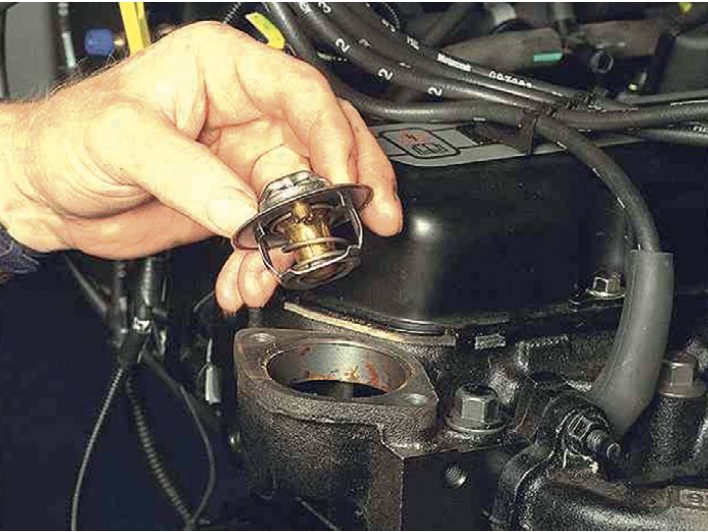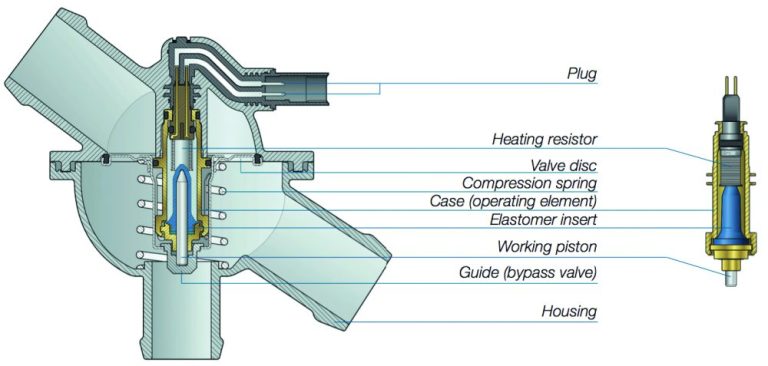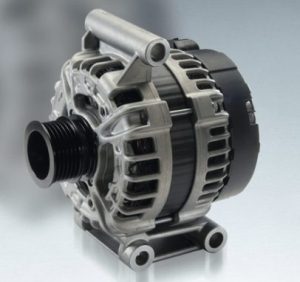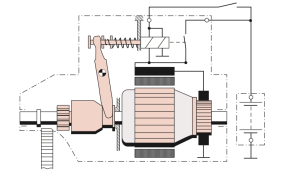A thermostat is a mechanical device that regulates the temperature of a system by controlling the flow of fluids. It is commonly used in heating and cooling systems to maintain a comfortable environment inside a building. A thermostat works by sensing the temperature of the fluid it controls, and then adjusting a valve or damper to regulate the flow of that fluid. In this blog, we will discuss the specific type of thermostat that uses a wax pellet in the hot-coolant area to regulate temperature.
The wax pellet thermostat is a type of mechanical thermostat that uses a wax pellet to control the flow of fluids. It is commonly used in automotive cooling systems, where it regulates the flow of coolant to maintain the engine temperature within a safe range. The thermostat consists of a valve or a disc that is placed in the coolant flow path. When the engine is cold, the valve remains closed, blocking the flow of coolant to the radiator. This allows the engine to warm up quickly and reach its operating temperature.
As the engine warms up, the wax pellet inside the thermostat expands, pushing a piston or a bellows that opens the valve. This allows the coolant to flow through the radiator, which helps to cool the engine. The wax pellet in the thermostat is designed to melt at a specific temperature, which allows it to regulate the flow of coolant to maintain a constant engine temperature.
One of the advantages of the wax pellet thermostat is that it is a simple and reliable device. It does not require any external power source, and it can operate in a wide range of temperatures. The wax pellet is also a self-contained system, which means that it does not require any external sensors or control systems to operate.
Another advantage of the wax pellet thermostat is that it is relatively easy to replace. If the thermostat fails, it can be removed and replaced with a new one in a matter of minutes. This makes it a popular choice for automotive cooling systems, where downtime can be costly.
However, there are some limitations to the wax pellet thermostat. One of the main limitations is that it is a slow-acting device. It takes some time for the wax pellet to expand and open the valve, which means that there may be some temperature overshoot before the thermostat reaches its set point. This can result in inefficient operation and higher energy consumption.
In addition, the wax pellet thermostat is not very accurate. It is designed to maintain a constant engine temperature within a certain range, but it may not be able to maintain the exact temperature required for optimal engine performance. This can result in reduced fuel efficiency and increased emissions.

Overall, the wax pellet thermostat is a simple and reliable device that is commonly used in automotive cooling systems. It uses a wax pellet in the hot-coolant area to regulate temperature, and it is relatively easy to replace if it fails. However, it is a slow-acting device and may not be very accurate, which can result in inefficient operation and higher energy consumption.
Certainly, I’d be happy to provide more information about the wax pellet thermostat and how it works.
The wax pellet thermostat is a type of bimetallic thermostat, which means it uses two different metals that have different coefficients of thermal expansion. The two metals are bonded together, and as the temperature changes, they expand or contract at different rates. This causes the bimetallic strip to bend, which can be used to open or close a valve.
In the case of the wax pellet thermostat, the bimetallic strip is connected to a piston or bellows that controls the valve. The wax pellet is located inside the piston or bellows, and it is designed to melt at a specific temperature. When the engine is cold, the wax pellet is solid and the valve remains closed. As the engine warms up, the wax pellet melts, causing the piston or bellows to expand and open the valve.
The wax pellet in the thermostat is made from a special type of wax that has a high coefficient of thermal expansion. This means that it expands quickly when it is heated, which allows it to exert a large amount of force on the piston or bellows. The wax pellet is also designed to melt at a specific temperature, which allows it to regulate the flow of coolant to maintain a constant engine temperature.
One of the benefits of the wax pellet thermostat is that it is self-contained, which means that it does not require any external sensors or control systems to operate. This makes it a relatively simple and reliable device that can be easily integrated into a cooling system.
However, there are some limitations to the wax pellet thermostat. One of the main limitations is that it is a slow-acting device, which means that it may take some time for the wax pellet to expand and open the valve. This can result in temperature overshoot, which can be inefficient and lead to higher energy consumption.
In addition, the wax pellet thermostat may not be very accurate. It is designed to maintain a constant engine temperature within a certain range, but it may not be able to maintain the exact temperature required for optimal engine performance. This can result in reduced fuel efficiency and increased emissions.
Overall, the wax pellet thermostat is a reliable and simple device that is commonly used in automotive cooling systems. It uses a wax pellet in the hot-coolant area to regulate temperature, and it is relatively easy to replace if it fails. However, it is a slow-acting device and may not be very accurate, which can result in inefficient operation and higher energy consumption.
Advantages:
- Reliability: The wax pellet thermostat is a simple and reliable device. It does not require any external power source or sensors to operate, which makes it less prone to failure.
- Cost-effective: The wax pellet thermostat is a cost-effective solution for regulating the temperature in automotive cooling systems. It is relatively inexpensive and easy to manufacture.
- Easy to replace: If the wax pellet thermostat fails, it can be easily replaced with a new one. This makes it a convenient and practical solution for cooling systems that need to be repaired quickly.
Disadvantages:
- Slow-acting: The wax pellet thermostat is a slow-acting device. It may take some time for the wax pellet to expand and open the valve, which can result in temperature overshoot and inefficient operation.
- Inaccurate: The wax pellet thermostat may not be very accurate. It is designed to maintain a constant engine temperature within a certain range, but it may not be able to maintain the exact temperature required for optimal engine performance.
- Limited range: The wax pellet thermostat has a limited temperature range. It is designed to work within a specific temperature range, which may not be suitable for all applications.
Overall, the wax pellet thermostat is a reliable and cost-effective device that is commonly used in automotive cooling systems. However, its slow-acting nature and limited accuracy may be a disadvantage for some applications. It is important to consider the specific requirements of your cooling system before deciding whether a wax pellet thermostat is the best solution.









